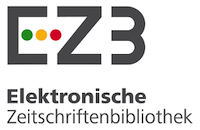Vino novedoso, ¿a quién dirigirlo?
Vino novedoso, ¿a quién dirigirlo?
##plugins.themes.bootstrap3.article.main##
Innovation and market segmentation are success factors in mature, competitive and controlled markets such as the wine market. This paper addresses the segmentation of the wine market for a new natural sparkling red wine. Variables that determine purchase intention such as attitudes and wine consumption, benefits and emotions caused by wine, age, gender, educational level and income are used. As a result, four differentiated segments were obtained: the ‘optimistic’, more open to innovations; the ‘willing’; the “moderate demanding” who demands with certain rationality and the ‘pretentious’ who is the most demanding, but who is not a big consumer. It is concluded that innovations should be directed towards the segments called ‘optimistic’ and ‘willing’.
Downloads
##plugins.themes.bootstrap3.article.details##
Barrena, R., García, T. y López-Mosquera, N. (2016). Determinantes socioeconómicos y emocionales en el consumo de nuevos alimentos. Un estudio piloto. ITEA, 112(1), 88-103.
https://doi.org/10.12706/itea.2016.006 DOI: https://doi.org/10.12706/itea.2016.006
Blashfield, R.K. (1976). Mixture model tests of cluster analysis: Accuracy of four agglomerative hierarchical methods. Psychological Bulletin, 83(3), 377-388. DOI: https://doi.org/10.1037//0033-2909.83.3.377
https://doi.org/10.1037/0033-2909.83.3.377
Ferreira, L. and Hitchcock, D.B. (2009). A Comparison of Hierarchical Methods for Clustering Functional Data. Communications in Statistics-Simulation and Computation, 38(9), 1925-1949.
https://doi.org/10.1080/03610910903168603 DOI: https://doi.org/10.1080/03610910903168603
Frías-Navarro, D. (2014). Apuntes de SPSS. Valencia, España: Universidad de Valencia.
García-Milon, A. et al. (2019). Does the product test really make a difference? Evidence from the launch of a new wine. Food Quality and Preference, 71, 422-430.
https://doi.org/10.1016/j.foodqual.2018.08.007 DOI: https://doi.org/10.1016/j.foodqual.2018.08.007
George, D. and Mallery, P. (2003). SPSS for Windows step by step: A simple guide and reference, 11.0 update. Boston, USA: Allyn & Bacon.
Gliem, J.A. and Gliem, R. (2003). Calculating,Interpreting, and Reporting Cronbach's Alpha Reliability Coefficient for Likert-Type Scales. Recuperado de https://scholarworks.iupui. edu/handle/1805/344.
Gourville, J.T. (2006). Eager Sellers and Stony Buyers: Understanding the Psychology of New- Product Adoption. Harvard Business Review, 84(6), 98-106.
Granato, D. et al. (2018). Use of principal component analysis (PCA) and hierarchical cluster analysis (HCA) for multivariate association between bioactive compounds and functional properties in foods: A critical perspective. Trends in Food Science & Technology, 72, 83-90. https://doi.org/10.1016/j.tifs.2017.12.006 DOI: https://doi.org/10.1016/j.tifs.2017.12.006
Hands, S. and Everitt, B. (1987). A Monte Carlo study of the recovery of cluster structure in binary data by hierarchical clustering techniques. Multivariate Behavioral Research, 22(2), 235-243. https://doi.org/10.1207/s15327906mbr2202_6 DOI: https://doi.org/10.1207/s15327906mbr2202_6
Juaneda-Ayensa, E. et al. (2019). The "right" wine taster: Identifying individuals high in emergent nature to develop new market-oriented products. British Food Journal, 121(3), 675-696.
https://doi.org/10.1108/BFJ-05-2018-0303 DOI: https://doi.org/10.1108/BFJ-05-2018-0303
Khodasevich, M.A. et al. (2017). Identification of Counterfeit Alcoholic Beverages Using Cluster Analysis in Principal-Component Space. Journal of Applied Spectroscopy, 84(3), 517-520.
https://doi.org/10.1007/s10812-017-0503-6 DOI: https://doi.org/10.1007/s10812-017-0503-6
Kuiper, F.K. and Fisher, L. (1975). A Monte Carlo comparison of six clustering procedures. Biometrics, 31(3), 777-783. https://doi.org/10.2307/2529565 DOI: https://doi.org/10.2307/2529565
Moreno, M. y Munuera, J.L. (2012). La revisión del conocimiento en los nuevos productos: el papel mediador de la creatividad y la velocidad al mercado. Revista Española de Investigación de Marketing ESIC, 16(1), 59-85. https://doi.org/10.1016/S1138-1442(14)60009-7 DOI: https://doi.org/10.1016/S1138-1442(14)60009-7
OEMV. (2014). El consumo de vino en España. Recuperado de http://www.oemv.es/ infografia-oemv-el-consumo-de-vino-enespana.
OEMV. (2018). El número de bodegas en España sube hasta las 4.373. Recuperado de http://www. oemv.es/el-numero-de-bodegas-en-espanasube- hasta-las-4-373.
OIV. (2018). Bases de datos y estadísticas. Recuperado de http://www.oiv.int/es/basesde- datos-y-estadisticas/estadisticas.
OIV. (2018). Aspectos de la coyuntura mundial. Recuperado de http://www.oiv.int/public/ medias/5960/aspectos-de-la-coyunturamundial-oiv-abril-2018.pdf.
Olarte, C., Pelegrín, J. and Reinares, E. (2017). Model of acceptance of a new type of beverage: Application to natural sparkling red wine. Spanish Journal of Agricultural Research, 15(1), e0102. https://doi.org/10.5424/sjar/2017151-10064 DOI: https://doi.org/10.5424/sjar/2017151-10064
Smith, W.R. (1956). Product differentiation and market segmentation as alternative marketing strategies. Journal of Marketing, 21(1), 3-8. https://doi.org/10.1177/002224295602100102 DOI: https://doi.org/10.1177/002224295602100102
Watson, D., Clark, L. and Tellegen, A. (1988). Development and Validation of Brief Measures of Positive and Negative Affect: The PANAS Scales. Journal of Personality and Social Psychology, 54(6), 1063-1070. https://doi.org/10.1037/0022-3514.54.6.1063 DOI: https://doi.org/10.1037//0022-3514.54.6.1063


































